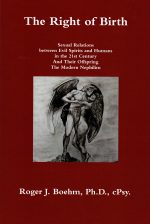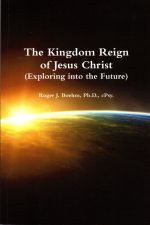The Church Age – The First Six Church Periods – Revelation 2:1 – 3:13
It is important to be aware that the messages to the seven Churches are inserted between two visions in the book of Revelation, the vision of Jesus among the seven lampstands in chapter one and the vision of the twenty-four elders around the throne in chapter four.
Chapter four is a vision of the glorified church with the Lord after it has been caught out (1 Thessalonians 4:13-17). This second division of the book of Revelation, “what is now,” includes chapters two and three, and is a description of the prophetic outline of the spiritual history of the Church from the time when John wrote the book in A.D. 96 down to the taking out of the Church. The Church disappears from the earth at the close of chapter three, and is not seen again until she reappears with her Lord in chapter nineteen.
This interpretation of the messages to the seven Churches was hidden to the early Church, because time was required for Church History to develop and be written in order for a comparison to be made revealing the written Word here in Revelation. If it had been revealed that the seven Churches stood for seven Church periods that would have to elapse before Christ could come back, the incentive to watch would have been absent.
While the character of these seven Churches is descriptive of the Church during seven periods of Church history, don’t forget that the condition of these Churches, as described, were their exact condition in John’s day. So, we see that at the close of the First Century the leaven of “False Doctrine” was at work in the Churches. The Churches are given in the order named because the peculiar characteristic of that Church applied to the period of Church History to which it is assigned. Please remember that which is a distinctive characteristic of each church period, does not disappear when that period ends, but continues on down through the next period, and so on until the end, therefore increasing the imperfections of the visible Church, until it ends in an open Apostasy.
We will look briefly at the first five Churches mention before looking in more detail at the final two churches, that of Philadelphia and lastly the current Laodicean Church Period.
The character of the Church at Ephesus is a fair representation of the Church period from A.D. 70 to A.D. 170. The Church at Ephesus – A Backslidden Church Rev. 2: -1-7
The character of the Church of Smyrna is a fair outline of the Church period extended from A.D, 170 to Constantine A.D. 312. The Church at Smyrna – A Persecuted Church -Rev. 2:8-11
The character of the Church at Pergamos period extends from the accession of Constantine A.D. 312 to A.D. 606, when Bonifice III was crowned Universal Bishop. The Church at Pergamos – A Licentious (immoral) Church – Rev. 2:12-17
The character of the Church at Thyatira is a fair outline of the period extended from A.D. 606 to the Reformation A.D. 1520. The Church at Thyatira – A Lax Church – Rev. 2:18-29
The character of the Church at Sardis is a fair representation of the Church period from A.D. 1520 to approximately A.D. 1750 The Church at Sardis – A Dead Church – Rev. 3:1-6
The character of the Church at Philadelphia is a fair representation of the Church period from A.D. 1750 to A.D. 1900. The Church at Philadelphia – A Favored Church – Rev. 3:7-13
The Church at Philadelphia had a little strength. It was like a person coming back to life who was still very weak. It was the dead Sardis Church revived, and Revivals were very characteristic of the Philadelphia Period. These Revivals began with George Whitefield in A. D. 1739, followed by John Wesley, Charles G. Finney and D. L. Moody.
Scriptures tell us the Church at Philadelphia had set before it an open door, that no man could shut. Note that this promise was made by Him, who has the key of David, who opens and no one will shut, and who shuts and no one opens. In 1793 William Carey sailed for India, where he found an “open door,” and since then the Lord had opened the door to countries throughout the world where missionaries could go.
It was to be kept from the hour of testing (Tribulation), that hour which is about to come upon the whole world, and as there has never yet been a worldwide Tribulation, this hour of testing must still be future and no doubt refers to the Great Tribulation that is going to come shortly upon the whole world, after the Rapture and just before the return of the Lord to set up His Millennial Kingdom, and as the promise is that the Philadelphia Church will not pass through the Tribulation, this is additional proof that the Church will be caught out before the Tribulation?
We must not forget that the characteristics of all these Periods continue in the Church down to the end. This is true of the Evangelistic and Missionary movements of the Philadelphia Period, but they are now more mechanical and based on business methods, and there is less spiritual power and less heart for evangelism, and this will continue until Christ returns.





